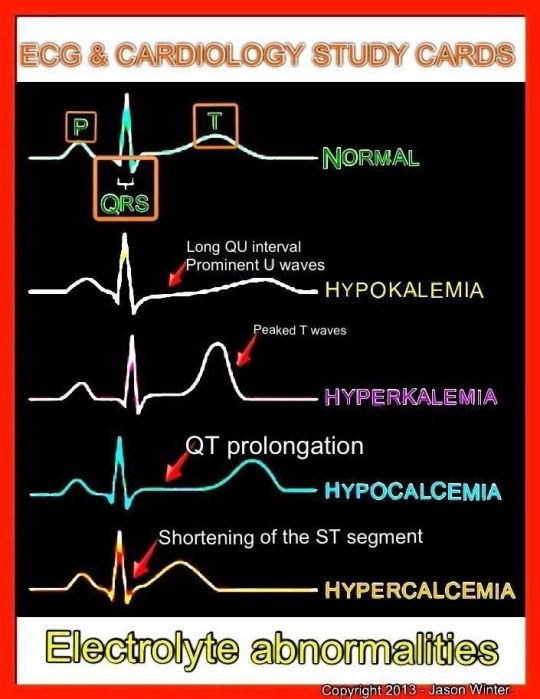Text
Statins
Which laboratory values should be monitored in a patient taking statins?
a) Blood glucose and hemoglobin
b) White blood cell count and platelets
c) Liver function tests and creatine kinase
d) Serum potassium and sodium
-------------------------------------------
Explanation: Statins are a class of medications used to lower cholesterol levels in the blood. As with any medication, statins can cause side effects, including damage to the liver and muscles. Therefore, it is important to monitor liver function tests (such as AST, ALT, and bilirubin) to ensure that the medication is not causing liver damage. Creatine kinase (CK) is an enzyme found in muscle tissue, and elevated levels can indicate muscle damage. Therefore, monitoring CK levels can help detect muscle damage associated with statin use. Blood glucose, hemoglobin, white blood cell count, platelets, serum potassium, and sodium are not typically affected by statin use and do not require monitoring.
Answer: The correct answer is c) Liver function tests and creatine kinase.
15 notes
·
View notes
Text
ACE Inhibitors
Examples: lisinopril, enalapril, and captopril
Action: decreases peripheral vascular resistance to decrease blood pressure; indicated for heart failure and hypertension
Side effects: postural hypotension, dizziness, nonproductive cough, angioedema, kidney injury, and hyperkalemia

Nursing considerations: (1) assess patient for history of renal impairment, as ACE inhibitors may exacerbate kidney injury; (2) teach patient to seek immediate medical attention if he/she experiences swelling of the lips (angioedema; as pictured), as severe angioedema may cause respiratory distress; (3) teach patient to notify HCP if a nagging cough develops
Also of note: ACE inhibitors are contraindicated during second- and third-trimester pregnancies
My clinical experience:
(1) Angioedema with ACE inhibitor use is quite common, especially with African Americans and may not manifest itself for months/years after starting an ACE inhibitor.
(2) In light of acute kidney injury, doctors do often suspect fault with ACE Inhibitors and will hold/discontinue medications as appropriate.
(3) A patient with a nonproductive cough, another common complication, although certainly not an immediate concern, will likely be switched to another class of medication.
(4) Remember, when heart failure arises, the goal is to DECREASE the WORK LOAD of the heart in any way. ACE inhibitors accomplish this by decreasing RESISTANCE of blood against arterial walls, thus increasing CARDIAC OUTPUT.
25 notes
·
View notes
Text
Tracheostomy Care: Suctioning Rules
Tracheostomy care is something of a daunting task for nurses. Some of them are simply grossed out by secretions and some of them are worried about messing with an airway. For whatever the reason, the best care of the patient is what matters and you are bound to come across a tracheostomy. As a student, you can bet you will run into quite a few exam questions on tracheostomy care. As a NCLEX studier, reviewing the proper technique is prudent.
Here is an acronym for some key suctioning rules (SHIRT):
Semi-Fowler’s position/Sterile technique
Hyper-oxygenate between passes
Intermittent suctioning upon removal of catheter
Gently rotate catheter upon removal
Time: no more than ten to fifteen seconds with each pass
What are some other rules you can think of when suctioning a patient?
18 notes
·
View notes
Photo
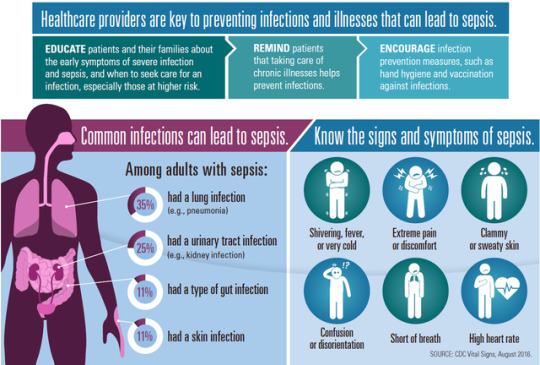
Know the signs of sepsis.
26 notes
·
View notes
Text
New recommendations out for O2 therapy
“For patients with acute myocardial infarction or stroke, do not initiate oxygen therapy in patients with SpO2 ≥90% (for ≥93% strong recommendation, for 90-92% weak recommendation).”
“A target SpO2 range of 90-94% seems reasonable for most patients and 88-92% for patients at risk of hypercapnic respiratory failure; use the minimum amount of oxygen necessary.”
https://www.bmj.com/content/363/bmj.k4169?fbclid=IwAR3xqKokSFDe8fZySCt4C5Z4Cnr8aGucHcVPlr2nLTMUkI0OEIBYtMMm7KQ
9 notes
·
View notes
Text
Social Anxiety Disorder
Today I was diagnosed with an anxiety disorder, specifically, Social Anxiety Disorder (SAD, for short). Like many people with the disorder, I didn't seek diagnosis/treatment for years. I've put hundreds of hours of thought over the course of the last few years and worked up the necessary courage to seek treatment.
Social anxiety disorder is a common type of anxiety disorder. A person with social anxiety disorder feels symptoms of anxiety or fear in certain or all social situations, such as meeting new people, dating, being on a job interview, answering a question in class, or having to talk to a cashier in a store. Doing everyday things in front of people—such as eating or drinking in front of others or using a public restroom—also causes anxiety or fear. The person is afraid that he or she will be humiliated, judged, and rejected.
Social anxiety disorder symptoms include:
Feeling highly anxious about being with other people and having a hard time talking to them
Feeling very self-conscious in front of other people and worried about feeling humiliated, embarrassed, or rejected, or fearful of offending others
Being very afraid that other people will judge them
Worrying for days or weeks before an event where other people will be
Staying away from places where there are other people
Having a hard time making friends and keeping friends
Blushing, sweating, or trembling around other people
Feeling nauseous or sick to your stomach when other people are around (source: NIH)
SAD is beyond being shy and quiet; beyond feeling nervous before giving a speech or before a first date. It interferes with my ability to form friendships and relationships; my ability to be "social". It deters self-esteem and exacerbates alienation. It interferes with my life on a daily basis. Although I take responsibility for what I can or cannot accomplish socially, I understand and accept that I am significantly hindered by the disorder.
Many people, knowing this, misunderstanding, will question my choice of profession, being that communication is, arguably, the most prominent function of a nurse. SAD doesn't significantly interfere or impair my work. I do not feel anxious with patients. Families do not cause me any more anxiety than the next nurse. It's a role I've practiced for a few years now. I have, for the most part, overcome the anxieties associated with nursing, and that was by design as it was a secondary reason for me in choosing nursing as a career (primary reasons being: working in the medical field, helping people, etc.). However, being social, making friends, interacting with people beyond work and school, attempting to form intimate relationships: those are roles that cause me significant anxiety.
I'm looking forward to working on myself in this manner with the help of medical professionals. I share this to raise awareness for mental health, although, at my own expense this time. To express that mental disorders are just as real and, many times, just as physical as disorders like diabetes or hypothyroidism. People with mental disorders have no more control over their conditions than people with "physical" ones, but treatment is available.
Treatment for SAD often consists of Cognitive Behavioral Therapy (the “hallmark” treatment for SAD; very effective), Exposure Therapy, etc., so I may help rid myself of the cognitive distortions I have woven in my brain and so I may think more rationally, which, in turn, will improve my behavior.
Anxiety disorders affect millions and millions of Americans. SAD, in particular, affects 7% of Americans on a daily basis.
Be well,
Stephen
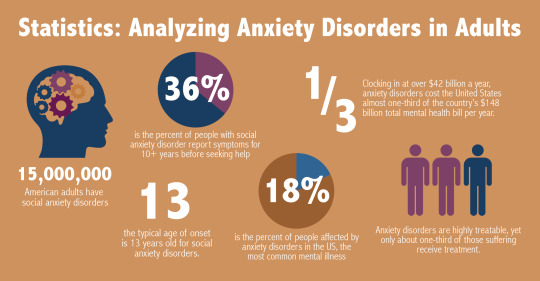
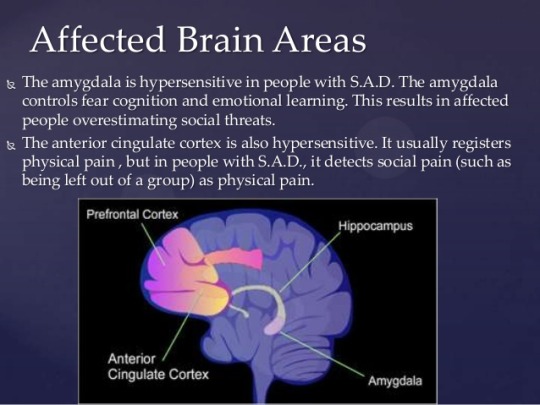
#social anxiety disorder#anxiety#nursing#nurse#nursingschool#nclex#rn#lpn#nursesweek#mentalhealthawarenessmonth#mentalhealth
79 notes
·
View notes
Photo
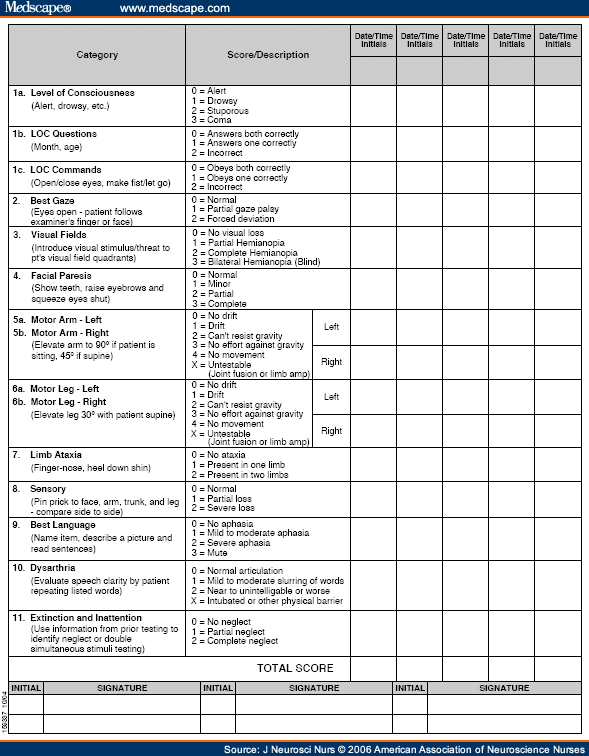
NIH stroke scale.
I, personally, find myself performing this a lot as a nurse.
It’s probably wise to become familiar with it for NCLEX, or at least the specific signs and symptoms associated with stroke noted on it.
65 notes
·
View notes
Photo

Rapid-acting: 15 minutes, multiply by 4 across
Short-acting: 2 times the value of rapid-acting
Intermediate-acting: 1 8 1 8
Long-acting: 1 hour 1 day
199 notes
·
View notes
Photo
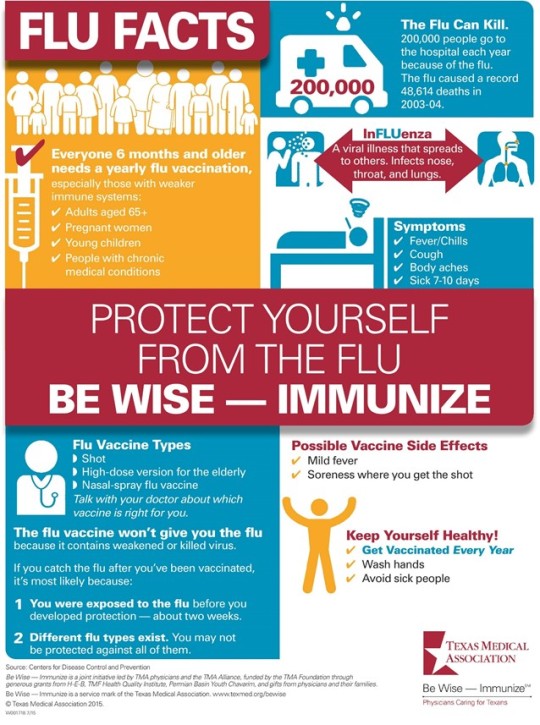
There are no excuses not to get your flu shot if you’re a nurse.
20 notes
·
View notes
Photo
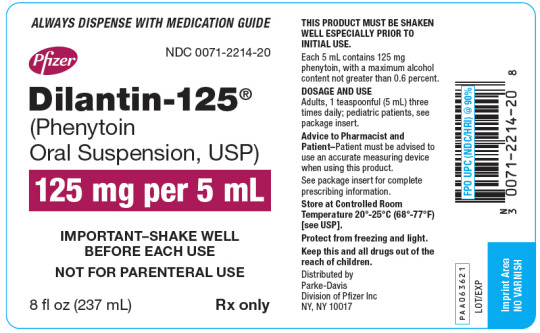
A patient with a history of seizures is admitted with recurrent seizures, likely due to medication noncompliance.
The patient was started on 100 mg Dilantin TID during the inpatient stay.
Today is day 2 on the unit for the patient.
It’s 0500 and today’s first dose of Dilantin is due. You read this label: how many mL do you draw up to equal 100 mg?
You review the labs, just recently drawn, and note the Dilantin level was 28 mcg/mL. Do you go forward with administering the medication? Do you hold the medication? Do you contact the physician? What is the most important nursing intervention here?
Would you know this if it appeared on NCLEX?
62 notes
·
View notes
Photo
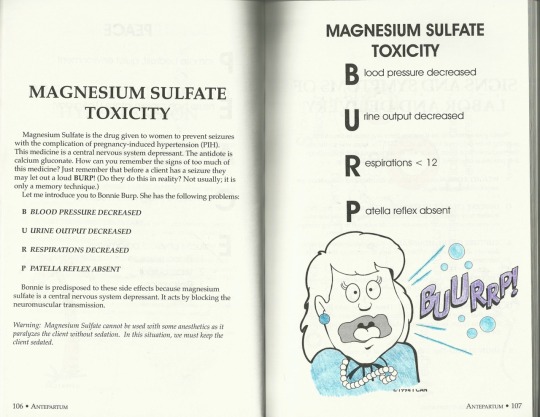
67 notes
·
View notes
Photo
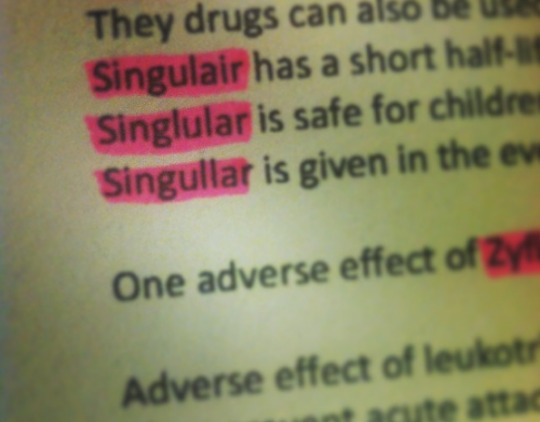
Another throwback to nursing school... finding humor in instructor mistakes!
XD
7 notes
·
View notes
Photo
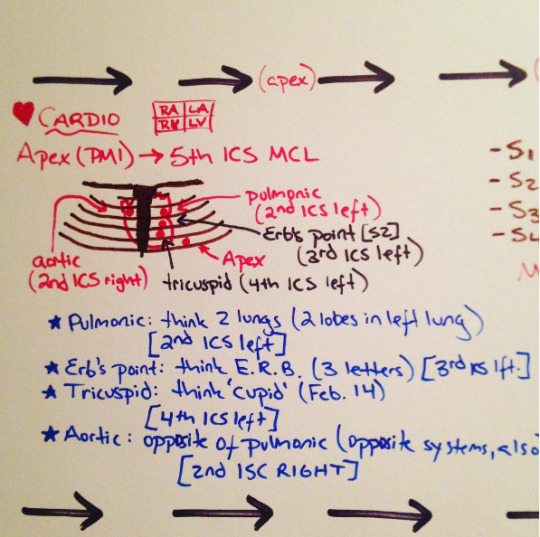
Nursing school throwback.
#nursing school#nursing student#nclex#heart#cardio#learning#nurse#rn#lpn#nursing#nursingstudent#nursingschool
37 notes
·
View notes
Photo
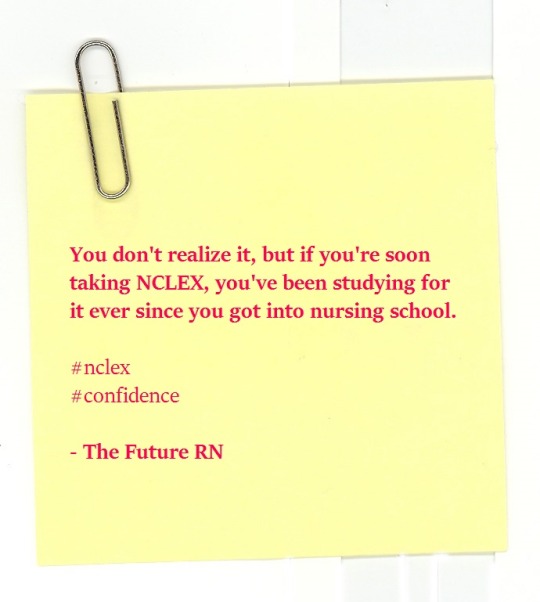
28 notes
·
View notes
Link
Expanding on social media,
follow me on Twitter @the_future_rn for tips and encouragement!
This account will be interactive, feel free to ask questions, etc. & I will do my best to research and respond.
Sleep well,
Stephen
2 notes
·
View notes

